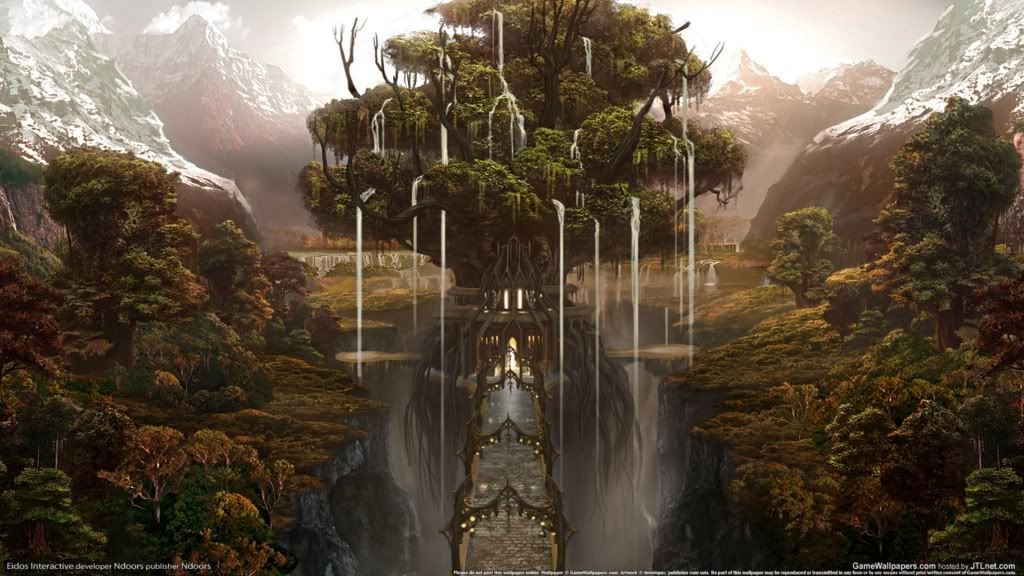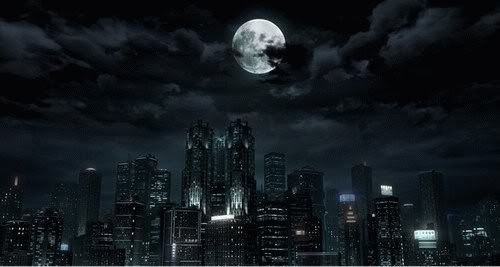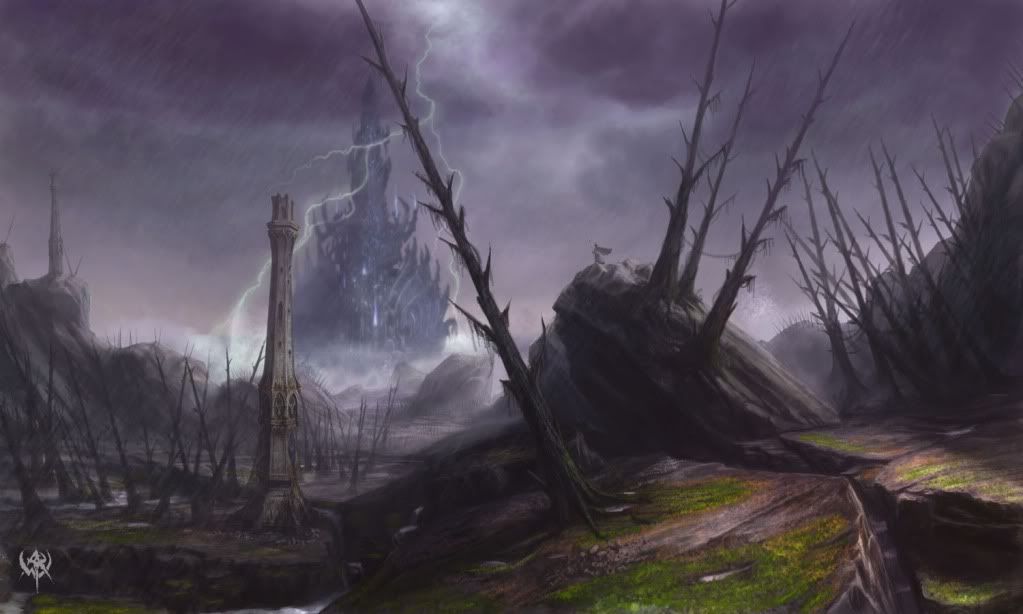Lycanthropes (Batillus)
Lycanthropy is a disease or a hereditary condition that causes humanoids to change form, usually into a hybrid humanoid-animal state. A lycanthrope, called nightwalkers by some, is an individual who possesses this condition. Should one of the other magical races be inflicted with the disease, the disease completely destroys their affinity for the base magic they once had, allowing fire to take over completely.
Some lycanthropes are in control of their ability to transform and others are not. Most lycanthropes have some empathy with animals with which they share their forms. Most lycanthropes are humans or elves. Superficially, lycanthropes resemble their original species but with the head of the specific animal whose shape they are cursed with. Lycanthropes can disguise themselves somewhat through their shape shifting abilities, either taking on a form almost identical to a humanoid but with subtle details revealing their true nature such as pointed teeth or long fingernails. Similarly, lycanthropes can assume an animal form, which would be a perfect disguise except for the unusual spark of intelligence in their eyes that sometimes gives them away.
Types of Lycanthropes:
1. Werebat
2. Werebear
3. Wereboar
4. Werecat
5. Werecrocodile
6. Werefox (foxwoman)
7. Wererat
8. Wereraven
9. Wereserpent
10. Wereshark
11. Weretiger
12. Werewolf
13. Werespider

Some lycanthropes are in control of their ability to transform and others are not. Most lycanthropes have some empathy with animals with which they share their forms. Most lycanthropes are humans or elves. Superficially, lycanthropes resemble their original species but with the head of the specific animal whose shape they are cursed with. Lycanthropes can disguise themselves somewhat through their shape shifting abilities, either taking on a form almost identical to a humanoid but with subtle details revealing their true nature such as pointed teeth or long fingernails. Similarly, lycanthropes can assume an animal form, which would be a perfect disguise except for the unusual spark of intelligence in their eyes that sometimes gives them away.
Types of Lycanthropes:
1. Werebat
2. Werebear
3. Wereboar
4. Werecat
5. Werecrocodile
6. Werefox (foxwoman)
7. Wererat
8. Wereraven
9. Wereserpent
10. Wereshark
11. Weretiger
12. Werewolf
13. Werespider

DEMONS (Tenebra)
There is no set look for the demons that roam Tenebra, no two demons look alike unless the very rare chance of twins happens. The skin color ranges from a white that rivals the snow to as black as coal. Their eyes are usually bright red, but some are known to have different colored, commonly much paler, eyes such as blue, lilac, dull gold or silver, though it is not uncommon to see Demons with much brighter eyes. They usually vary in height between 6' and 7'5", and weigh between 150 to 200 lbs on average.
Demon have lifespans' far beyond that of humans and comparable with elves, although usually somewhat longer. This is, of course, presuming the Demon doesn't meet a premature and violent end, as many often do, but those that survive the trials of their society and the horrors of Tenebra can live for centuries, sometimes as long as 2,000 years or more.

Demon have lifespans' far beyond that of humans and comparable with elves, although usually somewhat longer. This is, of course, presuming the Demon doesn't meet a premature and violent end, as many often do, but those that survive the trials of their society and the horrors of Tenebra can live for centuries, sometimes as long as 2,000 years or more.

ELF (Tellus)
Elves are roughly of human height, standing between 5'5" and 6'1" on average, but are lighter, weighing in between 130 to 180 lbs. Even exceptionally strong Elves look rather slim compared with other races, looking athletic rather than muscular. Most Elves are fair-skinned rather than dark, though some Elven skin is a hue darker than that of the star elves or moon elves. Most Elves have black hair, with silvery hues common amongst moon elves and star elves while blond or copper hues are more common amongst the sun elves. This hair is often worn long and loose.
Elves eyes are most commonly green, with sun elves commonly possessing golden eyes and moon elves commonly exhibiting blue hues. Violet eyes are also not unheard of, though rarer. Unlike moon elves or sun elves, Elves native to the Feywild lack pupils and have eyes that appear to be solid orbs of color while more common varieties of Elves exhibit eyes normal except for the gold-speckled appearance of moon elf eyes.
Elves grow at a decelerating rate throughout their lives. Very young Elves mature at a rate comparable with humans but during adolescence slow to a near stop until about 110 years of age, at which point Elves are considered mature. Elves then remain vigorous and active until the middle of their third century. Even so, after this most Elves suffer few of the infirmities of old age that plague other races, remaining full of life until the end.
Common to all Elves is the fact that they don't sleep. Instead, they enter a trance, also known as a “reverie”, for four hours a day. During this time they meditate on recent events.

Elves eyes are most commonly green, with sun elves commonly possessing golden eyes and moon elves commonly exhibiting blue hues. Violet eyes are also not unheard of, though rarer. Unlike moon elves or sun elves, Elves native to the Feywild lack pupils and have eyes that appear to be solid orbs of color while more common varieties of Elves exhibit eyes normal except for the gold-speckled appearance of moon elf eyes.
Elves grow at a decelerating rate throughout their lives. Very young Elves mature at a rate comparable with humans but during adolescence slow to a near stop until about 110 years of age, at which point Elves are considered mature. Elves then remain vigorous and active until the middle of their third century. Even so, after this most Elves suffer few of the infirmities of old age that plague other races, remaining full of life until the end.
Common to all Elves is the fact that they don't sleep. Instead, they enter a trance, also known as a “reverie”, for four hours a day. During this time they meditate on recent events.

Humans (Lucerna)
Humans are generally neutral to most species, though even the best tend to be somewhat wary of strangers, and at worst, humans can be raving xenophobes. Once they become accustomed to an individual or culture, they tend to adopt a stance that assumes that said culture has always been part of their own. Inclined to fear most creatures, humans tend to panic easily and usually lash out violently at those they feel are responsible. Unlike on other worlds, even the most isolated human hamlet will not be bigoted against other humans because of skin color or appearance; on a world with dozens of non-human species, racism is a pretty dull pastime, while specism is far more interesting.
Humans are usually about 5-6 ft. tall, and weigh about 100-200 lb., with a slight bias towards lesser weights. They have varying skin colors, from pale and tan to true ebony in color, while their hair can be black, red, brown, white, gray, or blond. Humans may have eyes of several shades, including those of blue, green, brown, red, hazel, black, and yellow; spellcasters often have a violet or orange sheen on their irises, which becomes pronounced when casting spells.
Humans have variable relations with other races, colored by their natural tendency to reject strangers. Dwarves are generally accepted in most human cultures, while halflings or gnomes are considered to be too inconsequential to take much notice of. In contrast, reptilian humanoids may attract more positive attention, usually of a curious or interested nature; unless reptilian humanoids make themselves a threat, humans would rather befriend lizardfolk, troglodytes, and the like. Humans generally find elves to be too haughty and arrogant for their tastes, and react to wood elves, Drow, and most fey with hostility, if not outright violence. Orcs are almost universally hated, while of the goblinoids, only goblins are tolerated, albeit barely. Ironically, half-humans such as half-elves, half-Orcs, or half-dragons are judged by their human heritage, not their other parent's ancestry, and as such attract little hostility for being half-human; this also applies to teiflings, aasimaar, lycanthropes, and the like. Most other species attract no more attention, beneficial or hostile, than they would for any other species.
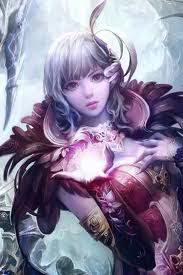
Humans are usually about 5-6 ft. tall, and weigh about 100-200 lb., with a slight bias towards lesser weights. They have varying skin colors, from pale and tan to true ebony in color, while their hair can be black, red, brown, white, gray, or blond. Humans may have eyes of several shades, including those of blue, green, brown, red, hazel, black, and yellow; spellcasters often have a violet or orange sheen on their irises, which becomes pronounced when casting spells.
Humans have variable relations with other races, colored by their natural tendency to reject strangers. Dwarves are generally accepted in most human cultures, while halflings or gnomes are considered to be too inconsequential to take much notice of. In contrast, reptilian humanoids may attract more positive attention, usually of a curious or interested nature; unless reptilian humanoids make themselves a threat, humans would rather befriend lizardfolk, troglodytes, and the like. Humans generally find elves to be too haughty and arrogant for their tastes, and react to wood elves, Drow, and most fey with hostility, if not outright violence. Orcs are almost universally hated, while of the goblinoids, only goblins are tolerated, albeit barely. Ironically, half-humans such as half-elves, half-Orcs, or half-dragons are judged by their human heritage, not their other parent's ancestry, and as such attract little hostility for being half-human; this also applies to teiflings, aasimaar, lycanthropes, and the like. Most other species attract no more attention, beneficial or hostile, than they would for any other species.

Shifter (Zephyru)
Shifters are no different than their Human counterparts when it comes to the humanoid appearance. One major trait of this being is that it transforms at will. It does not automatically change forms in full moons, when immersed in water, etc. They can stay in their human form indefinitely, and many don't even know they have this ability during early childhood (it usually first appears during the teenage years). Though their transformation is willful, they can "accidentally" cause transformation by losing control of their emotions, particularly anger.
Some shifters of this kind can transform into multiple animal forms while others can only transform into a single form. All members of this race begin as single-form shifters. It is not known why some can change into multiple forms and some into only a single form throughout their lives, but it appears to be genetically pre-determined. One of the main characteristics of the Shifters of Zephyru is their light colored hair and violet eyes, which is normally how they are told apart from humans.
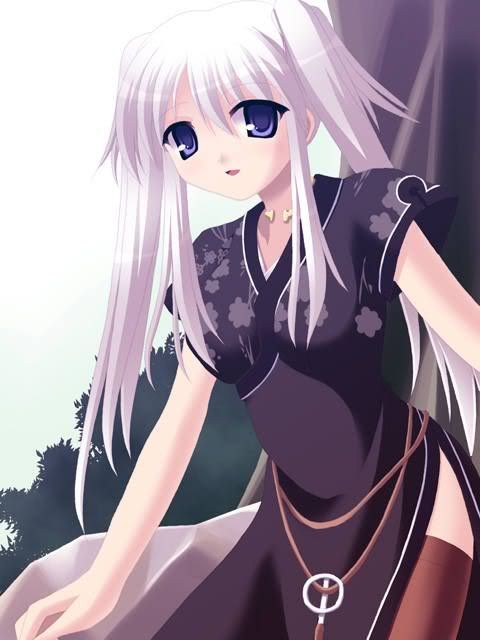
Some shifters of this kind can transform into multiple animal forms while others can only transform into a single form. All members of this race begin as single-form shifters. It is not known why some can change into multiple forms and some into only a single form throughout their lives, but it appears to be genetically pre-determined. One of the main characteristics of the Shifters of Zephyru is their light colored hair and violet eyes, which is normally how they are told apart from humans.

Nymphs (Nymphe)
Nymphs are fey that typically resemble Tel-quessir women, not just physically beautiful, but literally blindingly so. They usually dwell in forests, streams, waterfalls, or coves. They are the guardians and protectors of these and the portals to the faerie realm. It is said that their beauty can lead anyone who gazes upon them to either blindness, madness, or even death. However, they can suppress this ability if they wish. They absolutely hate anything that is either evil or ugly. Very rarely are their male children born to this race, and more often than not, they are outright killed as they are seen as a threat. On the off chance a male child is allowed to survive, they are often faced with hostility and forced to grow out their hair in hopes to bring out their more feminine qualities.
Their Queen is more powerful than King. They have the ability to wield the power of Water. They celebrate many different festivals. They are immortal unless killed in battle, which they try to avoid. Despite their immortality, their population is low due to breeding laws.

Their Queen is more powerful than King. They have the ability to wield the power of Water. They celebrate many different festivals. They are immortal unless killed in battle, which they try to avoid. Despite their immortality, their population is low due to breeding laws.

EVIL CHARACTERS
Dark Lord Bonketsu
Bonketsu once ruled over the six contents as a fearsome ruler. He enslaved the races and forced them to fight each other, strictly for his and his Companions amusement. No one knows what race he belongs too, some say he is undead; others believe he is a twisted form of some immortal Demi-God who only wished destruction upon Divus. He ruled for nearly 500 years before a band of six Sages, one from each continent, sealed him and his companion away in the barren wasteland that was once the home of the seventh race that had long ago died out. Now it has been nearly 5 millennia and the ground beneath the lost continent is beginning to shift, signaling his awakening.
Morphisor
Morphisor is Bonketsu’s companion who would fly to each continent, demanding a virgin tribute once yearly on the harvest moon. As a Red dragon, he is the largest, most powerful, and most infamous of the dragons. During Bonketsu’s rein as a tyrant, he did as he pleased and was often sent to burn down whole cities when they would not comply to Lord Bonketsu’s wishes. Morphisor was sealed along with Bonketsu 5 millenia ago and it is believed that he is the reason why the Earth shakes around the lost continent.




